By D.W. Pine and Skye Gurney
To illustrate the 2014 Person of the Year runners-up, we commissioned works from four artists, continuing the rich tradition of great portraiture in TIME.
The Ferguson Protesters by Titus Kaphar

To capture the impact of the Ferguson protests, Kaphar created a 4-ft by 5-ft oil painting he titled, “Yet Another Fight for Remembrance.” Kaphar, who lives and works in New Haven, Conn., and New York, mixes the work of Classic and Renaissance painters.
To watch a video depicting the process of Kaphar’s painting, go here.
“Like so many others, I’ve been struggling with what to do in response to what is happening in Ferguson and throughout the rest of this country,” says Kaphar, who received his MFA from Yale University’s School of Art. “Over the last few years I’ve found myself immersed in criminal justice research. I’ve been trying to make paintings that speak to the gravity of the situation. Honestly, it feels beyond me. What I make ends up feeling more like catharsis than communication.”
Kaphar’s work has been featured in more than a dozen exhibitions, including the current “The Jerome Project” at the Studio Museum in New York City through March 8, 2015. “The act of painting itself becomes a fight to remember the names of all the young black men who were taken too soon. A fight to remember that when this issue disappears from the media, it is not permission to forget. A fight to remember that change is possible.”
(See More: Ferguson Protesters, 2014 Person of the Year Runner-Up)
Vladimir Putin by Pavel Sokov
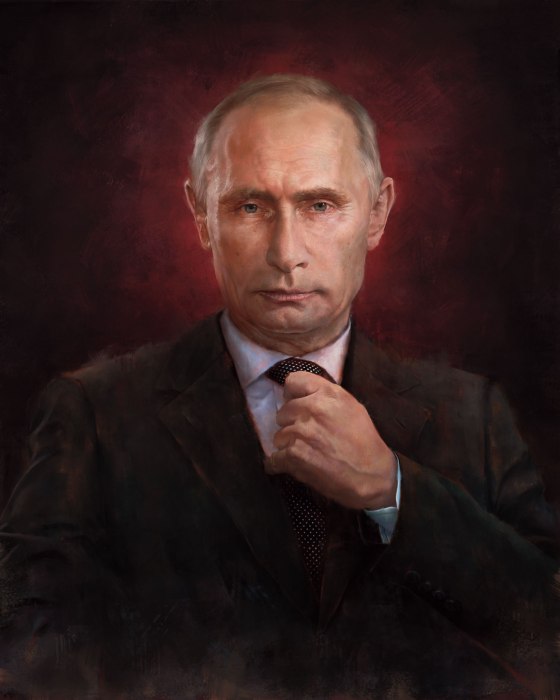
Born in Moscow in 1990, Sokov created an Old-World-style painting of Russian President Vladimir Putin using new-world technology. Sokov, who draws inspiration from classic Russian painters like Nicolai Fechin, painted this piece digitally using a Wacom tablet, allowing him to work directly on a screen with an electronic stylus. The portrait, which took more than 45 hours to create, utilized similar techniques as traditional oil painting.
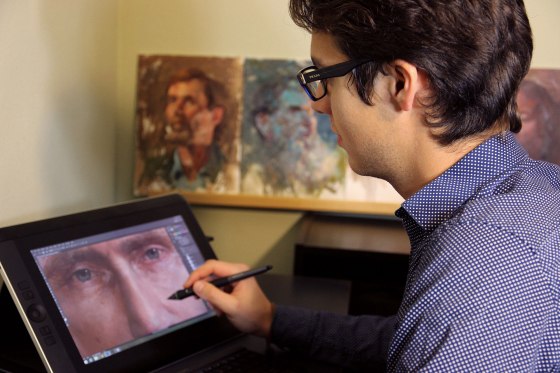
“With this piece, I wanted to convey a complex set of emotions with Putin’s facial expression,” says Sokov, who currently lives and works in Montreal. “I had to adjust and invent the eyes’ expression by playing with the eyelids and eyebrows. I looked at various photos of Putin displaying certain emotions and how his facial muscles behaved in each case. By studying that, I was able to inject a realistic adjustment to his facial expression to achieve the sort of effect I was looking for.”
(See More: Vladimir Putin, 2014 Person of the Year Runner-Up)
Massoud Barzani by Jason Seiler
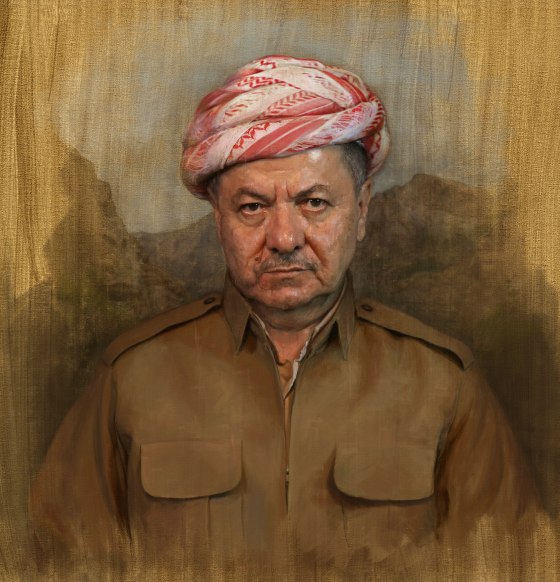
To capture the power of the Kurdistan Regional Government president, we turned to Chicago-based artist Jason Seiler — best known for his portrait of TIME’s 2013 Person of the Year Pope Francis.
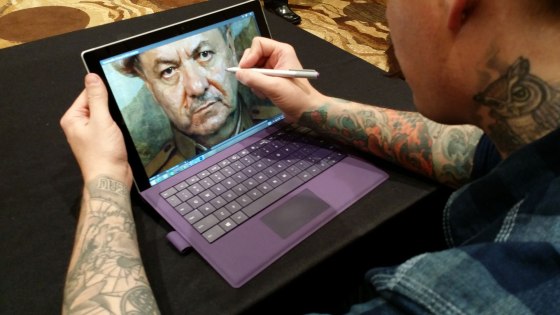
Seiler, a classically trained oil painter who taught himself to paint digitally on a 21-inch LCD display, watched YouTube videos of Barzani speaking and walking to observe his posture and overall feeling.
“I love the intense look in his eyes and knew that was the direction I wanted to take this portrait,” says Seiler, who used a stained linen canvas as the foundation before layering paint on top. “My ultimate goal is to paint a portrait that truly feels like my subject. I want to paint as realistic as I can while keeping a painterly look and feel.”
Says Seiler, who also worked as a character designer on Tim Burton’s “Alice In Wonderland,” “it’s really important to me that the brush work has a life to it. Painting every pore isn’t what makes it feel realistic, it’s the suggested idea of realism which fools the viewer into believing the illusion of it being real, when in truth, it’s all one brush stroke laid next to another.”
(See More: Massoud Barzani, 2014 Person of the Year Runner-Up)
Jack Ma by Tracie Ching
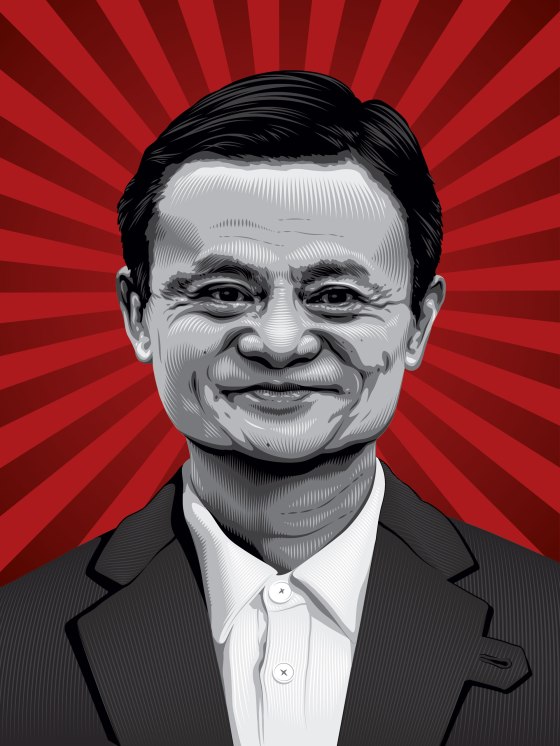
An illustrator and graphic designer from Washington, D.C., Ching is a self-taught digital artist. Her work specializes in portraiture featuring complex line work with a limited color palette — a style developed after years of producing silkscreen prints. Only seven colors (black, white, three shades of grey and two shades of red) were used in her Ma portrait.
“I knew I would represent him as a businessman but wanted to ensure his humility and vibrancy came across as well,” says Ching, who’s work is drawn directly in Adobe Illustrator.
(See More: Jack Ma, 2014 Person of the Year Runner-Up)
Execution of the portrait begins with large shapes of color, isolating the hair, face, neck and clothing. Ching then breaks the portrait down into smaller and smaller shapes, working first on the darkest shadows and pulling out lighter tones and highlights. Eventually the shapes give way to crosshatching-like line work created with custom digital brushes. Once the portrait is near finished a background is laid down — often bright, simple, and graphic to help the portrait pop.